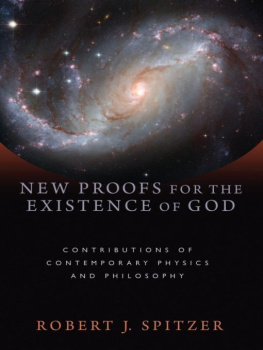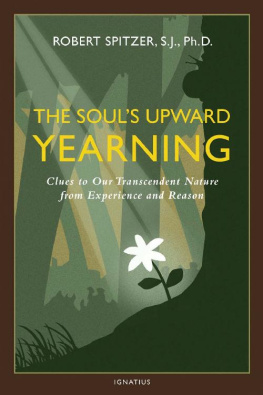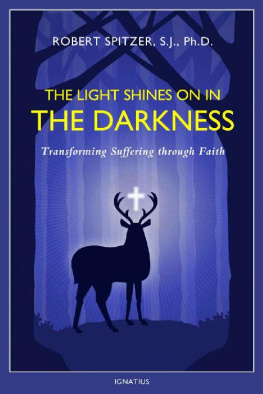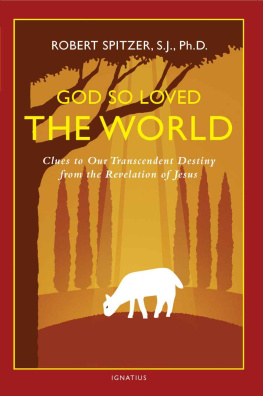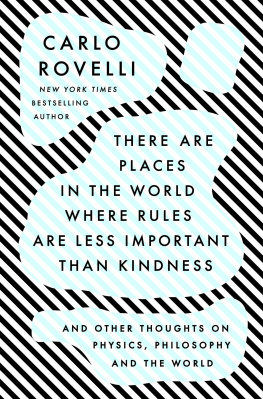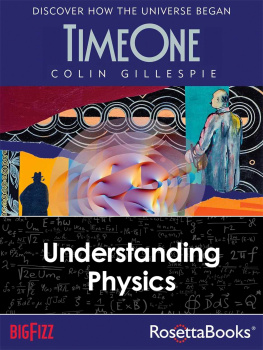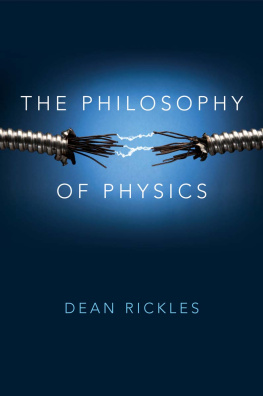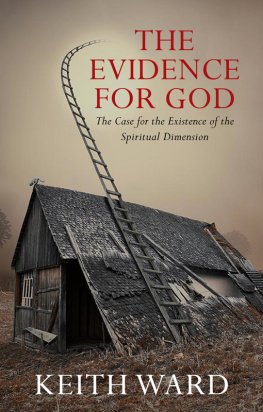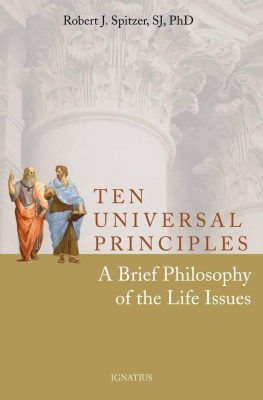Table of Contents

2010 Robert J. Spitzer
All rights reserved
Published 2010 by
Wm. B. Eerdmans Publishing Co.
2140 Oak Industrial Drive N.E., Grand Rapids, Michigan 49505 /
P.O. Box 163, Cambridge CB3 9PU U.K.
Printed in the United States of America
16 15 14 13 12 11 10 7 6 5 4 3 2 1
Library of Congress Cataloging-in-Publication Data
Spitzer, Robert J., 1952-
New proofs for the existence of God: contributions of contemporary physics and philosophy / Robert J. Spitzer. p. cm. Includes bibliographical references and index.
ISBN 978-0-8028-6383-6 (pbk.: alk. paper)
1. God (Christianity) 2. GodProof. 3. PhysicsReligious aspectsChristianity. 4. Philosophical theology. I. Title. BT103.S687 2010 212.1dc22 2010013887
www.eerdmans.com
In memory of my mother,
whose faith has inspired me from childhood to this day;
and my father,
whose love of learning stirred the spirit of inquiry within me.
And in memory of Paul Weiss,
whose freedom and discipline in metaphysical creativity
made a lifelong impression.
Acknowledgments
I owe a sincere debt of gratitude to Camille De Blasi Pauley, without whom this book would have never seen the light of day. She has not only typed multiple drafts of this manuscript, but also has played a crucial role in transferring the material from my head to the computer. She has spent countless hours interacting with me and formatting and fine-tuning this text. Her many editorial suggestions have made this volume clearer and more accessible.
I would also like to thank International Philosophical Quarterly for permission to use my published materials from the June 2001 and September 2001 issues; Pachart Publishing and the Vatican Observatory for permission to use my published materials from the 2003 issue of Philosophy in Science; and the Journal of Ultimate Reality and Meaning (Toronto) for permission to use my published materials from the December 2004 issue.
I am grateful to the many people who have supported and influenced me intellectually throughout the last fifteen years, particularly Dr. Paul Weiss, Dr. James Collins, Dr. Vernon Bourke, William Wallace, O.P., Dr. Timothy Eastman, Thomas King, S.J., Joseph Koterski, S.J., and William Stoeger, S.J. I am also grateful to Theodore Wolf, S.J., and William Carney, S.J., who got me started in the philosophical enterprise at Gonzaga University in 1972-73.
I would also like to express my sincere appreciation to Joan Jacoby for her invaluable help in preparing the final manuscript and to those who have helped me indirectly, including the Jesuit Community, my staff, and the professors and students at Gonzaga University, Seattle University, and Georgetown University.
Introduction
The last few years have seen several books championing agnosticism or atheism making their way into the popular press. These books leave most informed readers quite baffled, because they ignore the vast majority (if not the entirety) of the considerable evidence for theism provided by physics and philosophy during the last few decades. This evidence is capable of grounding reasonable and responsible belief in a super-intelligent, transcendent, creative power that stands at the origins of our universe or any hypothetically postulated multiverse. The main purpose of this book is to give a brief synopsis of this evidence to readers who are interested in exploring the strongest rational foundation for faith that has come to light in human history.
The great physicist Sir Arthur Eddington remarked in his classic work The Nature of the Physical World:
We all know that there are regions of the human spirit untrammeled by the world of physics. In the mystic sense of the creation around us, in the expression of art, in a yearning towards God, the soul grows upward and finds the fulfillment of something implanted in its nature. The sanction for this development is within us, a striving born with our consciousness or an Inner Light proceeding from a greater power than ours. Science can scarcely question this sanction, for the pursuit of science springs from a striving which the mind is impelled to follow, a questioning that will not be suppressed. Whether in the intellectual pursuits of science or in the mystical pursuits of the spirit, the light beckons ahead and the purpose surging in our nature responds.
Perhaps this light is responsible for the persistent rational pursuit of ultimate grounds and causation which has been frequently associated with God since the time of Plato
In the twentieth century, David Hilbert (the father of finite mathematics) has given new probative force and depth to the argument for the intrinsic finitude of past time (implying a timeless Creator) in his article On the Infinite. Quantum Theory has expanded the horizons of ontology by obliging it to contend with non-location and information fields, which, in their turn, have given new evidence for non-materialistic (information-like) dimensions of physical reality. The General Theory of Relativity has forced us to re-envision the universe as a dynamically integrated finite whole in contradistinction to Newtons infinite universe of mass points in empty space.
Big Bang cosmology has introduced the probability of the finitude of the observable universe and contemporary universal inflationary theory has shown the strong probability of an initial singularity, implying a causative power transcending universal space and time. When these and other discoveries are allowed to complement traditional proofs for the existence of God, they provide a remarkable rational foundation for the existence of a unique, unconditioned, unrestricted, absolutely simple, super-intelligent, continuous Creator of all else that is.
I. The Contemporary Theistic Scene
Parts of this book could not have been written before 2003 when Borde, Guth, and Vilenkin established the requirement for a singularity in all inflationary model universes, The classical Big Bang model could not have been addressed before 1964 when evidence indicated the likelihood of finite space and time in our observable universe, and quantum cosmology could not have been addressed prior to that time.
These developments not only have an important effect on Chapters 1 and 2 of this book, but also on the philosophical proofs given in Chapters 3-5, because they give greater credence to classical and medieval philosophical ideas that lost credibility during the era of Newtonian mechanics (which affected philosophy all the way through the early twentieth century). Today, concepts like ontological simplicity, conditioned and unconditioned realities, and formal cause (particularly in the information fields intrinsic to quantum fields) enjoy a veracity and significance beyond that of their classical and medieval origins. These discoveries provide experimentally verifiable examples of concepts used to prove the existence of God in Chapters 3-5.
In view of this, I here offer my rendition of a state-of-the-art formulation of the proofs. I hope to provide a staging area to assemble the work of great astrophysicists, cosmologists, and philosophers who have contributed so much to this field, and to bring their thoughts together in a single, comprehensive volume.
II. Why Are These Proofs New? A Brief History of the Five Approaches
Significant updates in rational approaches to God have been achieved in five major areas over the last seventy years:
1. evidence from physics and cosmology about an initial singularity (implying a creation event transcending universal space-time asymmetry Chapter 1),2. evidence of the extremely high improbability of an anthropic universe (one that will allow the emergence of any life form), implying the possibility of supernatural design (Chapter 2),3. development of the notions, and corroboration of the reality, of causation and simplicity in quantum theory and cosmology, which can be applied to what was traditionally conceived as the uncaused Cause argument (Chapter 3),4. an ontological grounding for Bernard Lonergans proof for the existence of God in Insight: A Study of Human Understanding (Chapter 4), and5. contemporary developments in the ontological explanation of time and the Hilbertian prohibition of infinities hypothesized within finite structures, which has led to a credible contemporary formulation of the long-discarded proof of the impossibility of infinite past time (Chapter 5).
Next page
